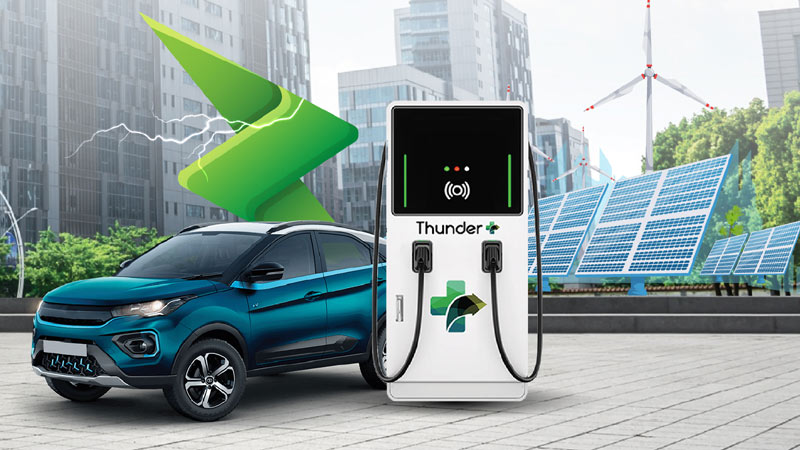India is leaving no stone unturned in its efforts to jump on the bandwagon of the EV ecosystem, given the damage fossil fuels are doing to the environment. Add to it the rising prices of these fuels and the necessity to adapt to the sustainability of urban transport systems in the country.
The Union government is hastening the drive by incentivizing EV makers and developing effective, economical, and available infrastructure for charging these environmentally friendly vehicles. The success of these initiatives will depend upon the costs of investments and meeting the EV ecosystem’s primary requirements. Ultimately, it all depends on making proper charging infrastructure accessible to EVs.
What can automakers do?
When auto manufacturers began producing EVs, they focused on optimizing battery storage capacity to ease their customers’ range anxiety and make EVs more appealing to the common man. After all, there is only a handful of EV charger makers in a country like India.
For instance, for a battery to be larger and bulkier, the vehicle’s structure needs to be sturdier, adversely affecting its range, which requires batteries to be larger. On the other hand, EVs will be more sustainable with smaller and portable batteries, as they will be less reliant on uncommon elements like lithium. Lighter batteries will also make the costs of EVs cheaper.
While factoring in the total cost of making EVs, about 30% to 40% will be owing to the batteries. In contrast, the cost of buying an EV is still seen as a significant hurdle if this eco-friendly vehicle segment needs to become significantly large.
EVs vs. Petrol pumps
When EVs initially burst onto the scene, customers got used to the driving range that gas tanks of 10–15 litres provide. EV makers, therefore, aimed to make batteries of a corresponding range. As users were then visiting petrol stations to fill their tanks, plug-in chargers behaved like traditional petrol pumps.
But electricity is not like fossil fuels, which must be extracted, refined, and transported to fuel stations. It is more flexible, as it can be produced anywhere in any quantity, including vehicles, where physical contact is unnecessary.
In this scenario, the question is why mobile EV chargers should follow in these petrol stations’ footsteps.
Since EVs are not like internal combustion engine (ICE) vehicles, they can be charged at any location, be it a home, a parking lot, or even on the roads. Charging stations for EVs in the future do not need the users to engage proactively, enhancing the user experience manifold compared to today’s conventional fuel pumps of ICE vehicles.
At the same time, renewable power can be generated and stored with solar cells on the roofs of various commercial establishments, such as shops, offices, and other such spaces, which can encourage swift growth on the supply side. Retail outlets can then offer free charging services to incentivize the rise in EVs lining up there.
Conclusion
Alternatively, could the government encourage charge point installers along with EV customers? Motivating retail outlets and small business owners to set up modular EV storage stations could become the most efficient method of reducing the total cost of owning and operating EVs for users and reducing the inconvenience on our existing infrastructure.
This could create an ideal scenario where charging points are at the most accessible locations, reducing customers’ range anxiety and allowing automakers to shift to producing more portable and affordable vehicles with lighter batteries. This is likely to grow the rate at which EVs are being adopted significantly, increasing the presence of EV charging stations everywhere.
This development will not be restricted to consumer vehicles only. Its impact will be felt on large freight trucks, which contribute massively to greenhouse gas (GHG) emissions and are required for last-mile transportation.


